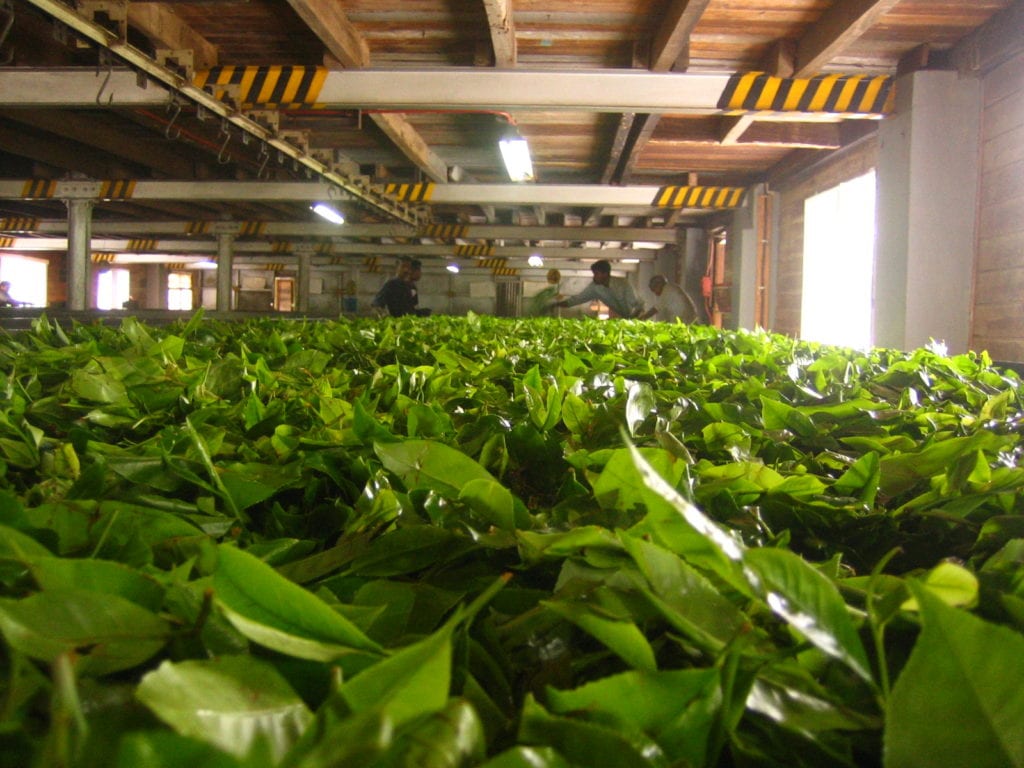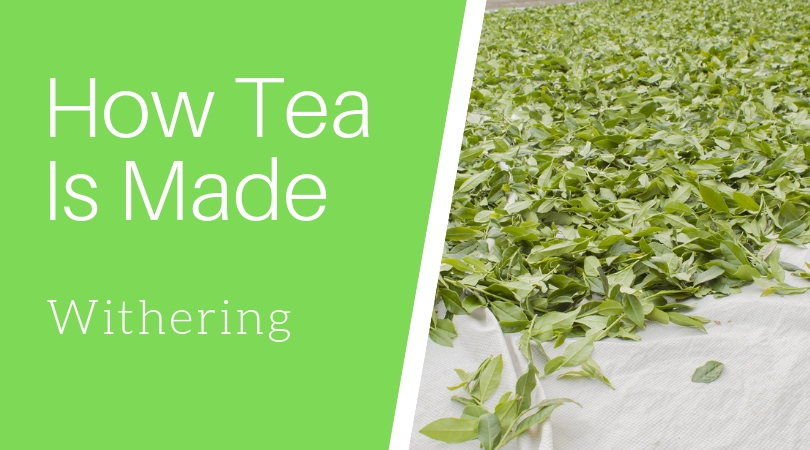This is the second post in a series where I will be breaking down each of the steps that tea undergoes, from leaf to cup. Check out last week’s post to learn about how tea is grown and harvested.
When discussing tea processing, I think it is important to keep in mind that not every tea will fall into neat little boxes. That being said simplifying is the easiest way to understand the basics. This flow chart created by Tony Gebely at Tea Epicure is a great reference point. If you haven’t picked his book up yet, you totally should!

What is withering?
Tea leaves naturally begin wilting the moment that they are plucked. This is the same process that happens to cut flowers or freshly mown grass. At the tea factory, leaves are spread out in a thin layer. This can be on a bamboo tray or a large stainless steel trough. They will begin to soften and lose moisture over the course of several hours. This makes them more pliable for the next step of rolling.
During withering, amino acids and simple sugars are formed. Complex compounds break down into simpler volatile compounds that give tea its aroma. Enzymatic activity will increase as will the concentration of caffeine. The cell walls of the leaf break down and slowly begin oxidation.
Modern tea makers carefully control withering carefully using heat and humidity. The process can take nearly a full day depending on what the environmental conditions are. Feel and smell are used to measure when withering is complete. Too much moisture loss will stop the tea from properly oxidizing.

Which teas undergo withering?
Withering is an essential step for every category of tea. Green tea undergoes this step for this shortest period of time. This is why the aromas are more grassy and vegetal than other types. Puerh also generally receives a fairly short wither.
Extended withers result in a sweeter, more floral tea but take significantly more time. First Flush Darjeeling is often not fully oxidized because they are made using a hard wither. A portion of the leaf completely dries out which causes the variation in color that we often see on 1st flush teas. This usually occurs during cooler weather or at high altitude.
Stay tuned next week to learn all about rolling!

